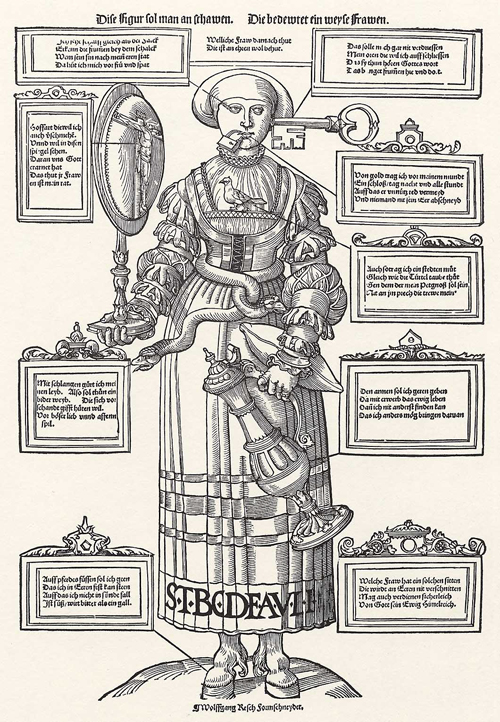













INTRODUCTION | DOCUMENTS | IMAGES | MAPS | EDITOR
|
A 16th-century woman lived under the authority of the men in her life. Unless she lived in community with other women – a practice that survived the Protestant reformation in Catholic lands but also in some Protestant ones in the form of Lutheran (but also a few Catholic) convents – she passed from her father’s rule to her husband’s. Still, the general conditions of women’s subordination to men were qualified both in ideal and in practice, and there is much evidence of genuine partnership between husbands and wives. The rapidly growing literature on the conditions of a happy marriage and on codes of virtuous behavior was directed at both sexes, to be sure, but not always in the same way. Many experiences were, of course, the same for both genders – starvation, sickness, and death. Still, in other aspects of life, rules and moral teachings were gender specific. This broadsheet describes the qualities of a wise woman and introduces rules of conduct for a virtuous wife. Modesty, piety, loyalty, and charity are among the virtues prescribed by the broadsheet. Woodcut by Anton Woensam (1500-41), c. 1525. Please click on print version (below) for a larger version with enhanced resolution.
© Directmedia Publishing GmbH, Berlin Germany |
 print version
print version return to image list
return to image list last image in previous chapter
last image in previous chapter
